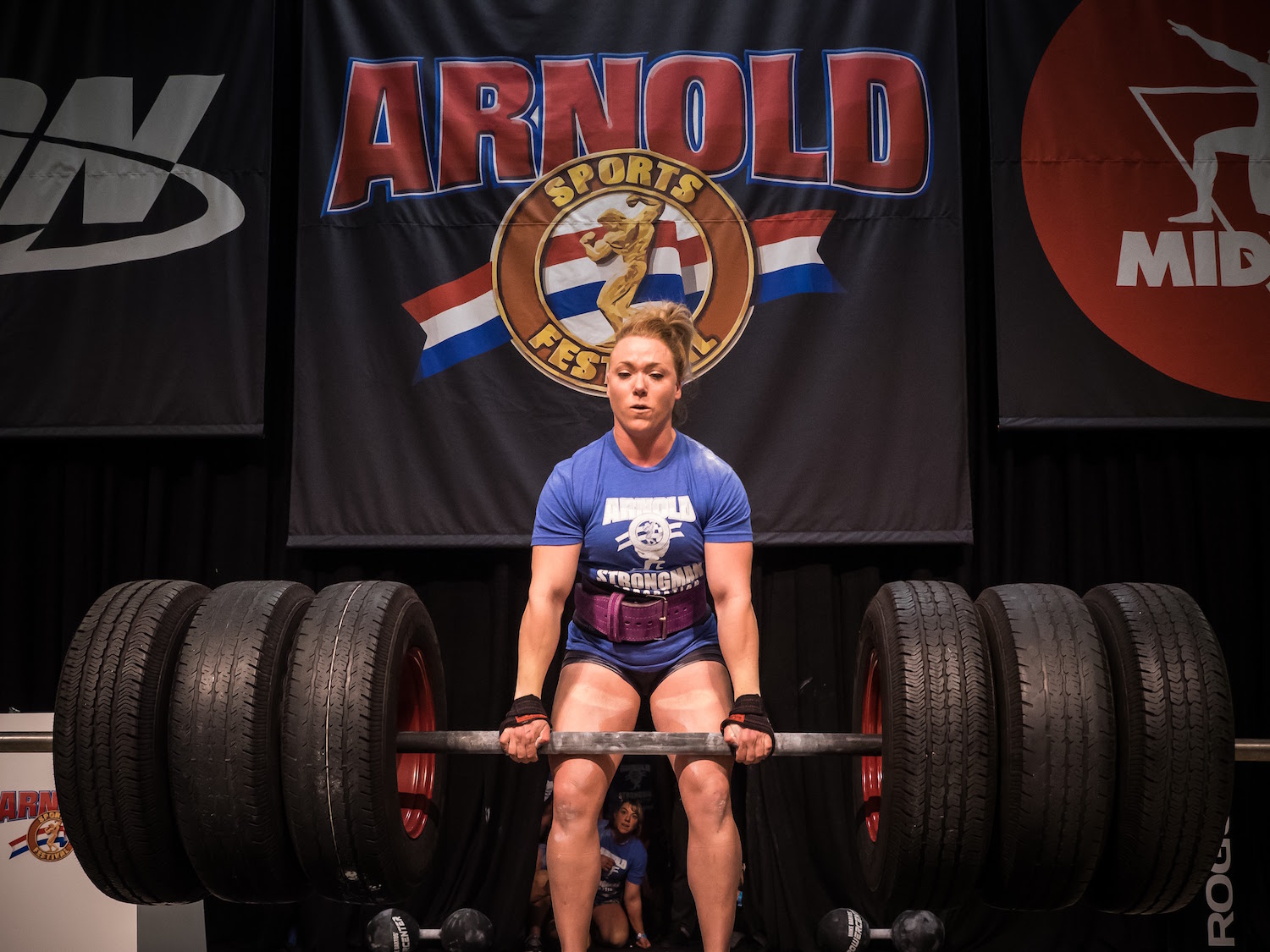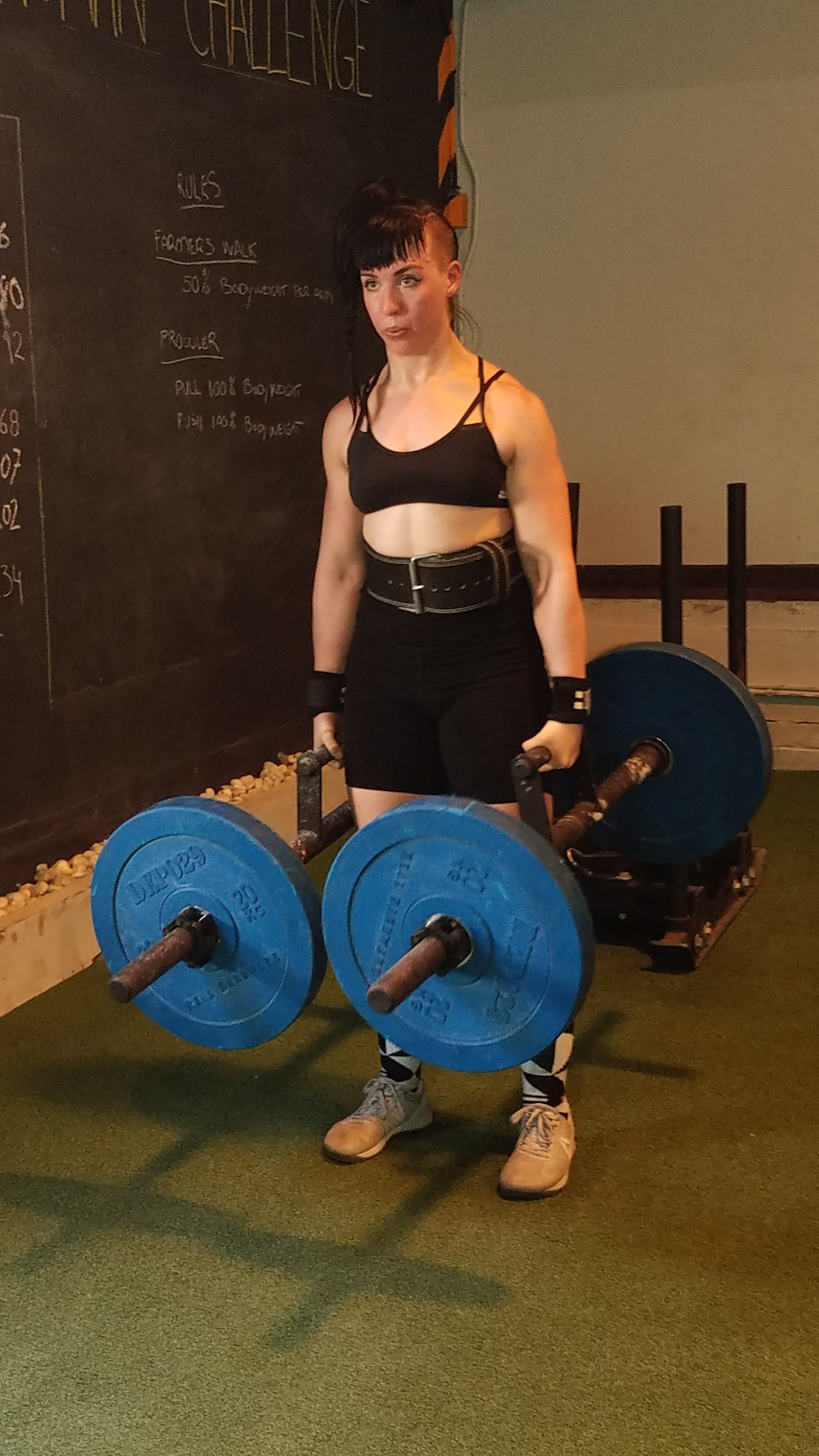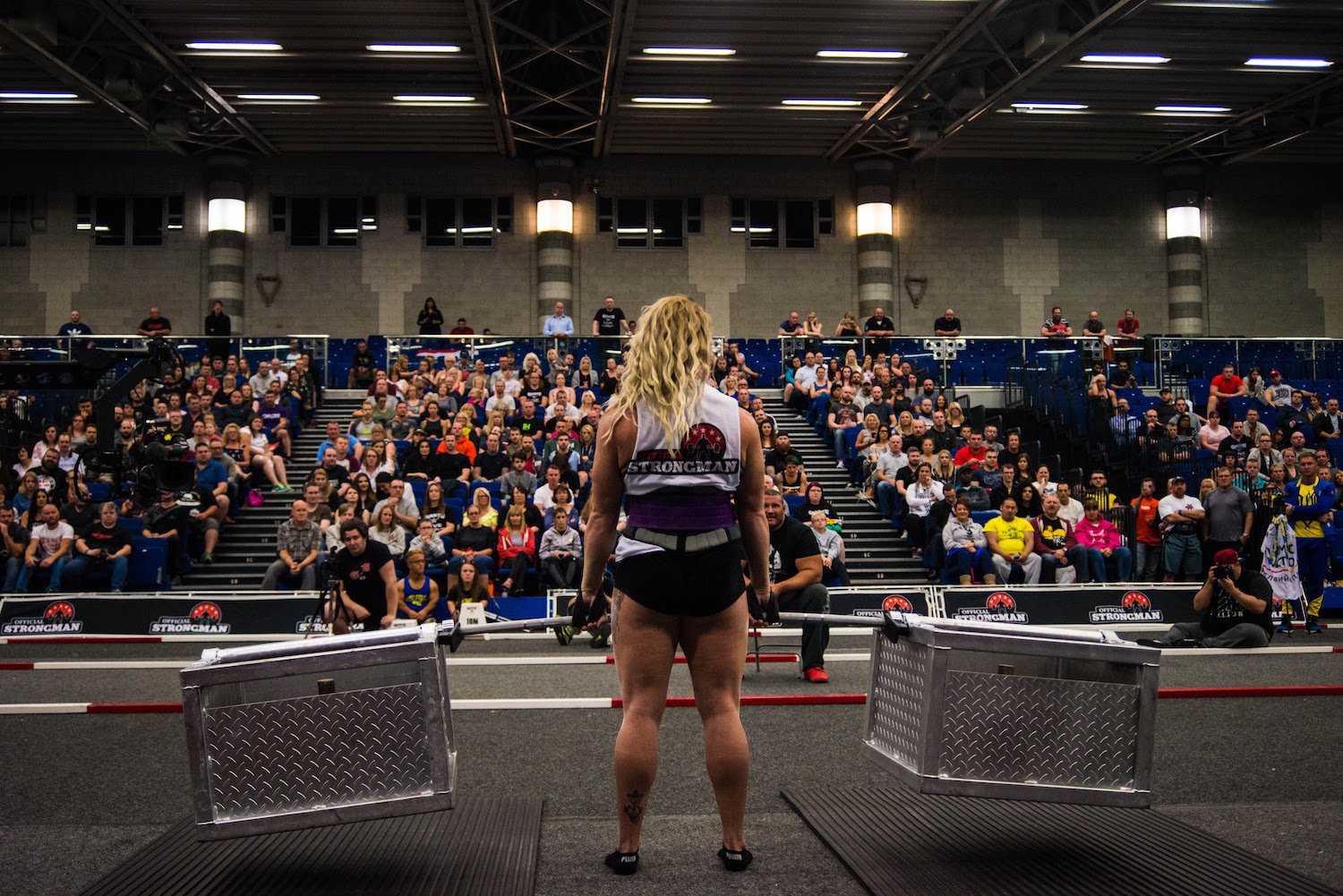“How do I keep my grip from holding back my deadlift?
“Just do heavy deadlifts!”
“But I can’t hold onto the bar over 85%”
“…Do more deadlifts!”
Well, no, but sadly I’ve heard some variation of this conversation pretty frequently.
Don’t let your grip hold you back from pulling heavy and GETTING STRONGER.
Women tend to have much smaller hands and fingers. Barbells are kind of hard to hold onto when they have hundreds of pounds on them AND your fingers barely close all the way around the bar.
[Check out our full list of the best lifting straps!]
Do yourself a favor, and abandon the idea that training with straps is somehow cheating or doesn’t count. Train with straps.
There’s a few reasons why and I’ll give you mine, as well as some input from Liefia Ingalls, the first ever Arnold Pro Strongwoman Champion.
1. What Dat Booty Do?
What are the dominant muscle groups responsible for the deadlift? Back, butt and hamstrings, right? Duh! So, how does it benefit THOSE muscle groups to be limited by what your tiny hands can or cannot do? If you are at a point in your deadlift while you are waiting for your grip strength to catch up, you are wasting time that you could be progressing your deadlift. Your larger muscle groups are being cheated of the necessary overload because you can’t hold enough weight in your hands. Train with straps for your top weight sets.
Here is Ingalls’ take:
“If you’re following an intelligent program, then every movement and accessory in that program has a very specific purpose to help you reach your goal. In the case of deadlifts, the primary purpose is not usually grip development. Straps allow you minimize your rate of failure, and focus on the real reason you’re using the lift in the first place, which is usually posterior chain development AKA “dem booty gains.”
In my training, I use straps on most all deadlifts and rows because my purpose for using these movements is not building grip strength. Especially in the case of bodybuilding and accessories we are talking about a lot of reps over a lot of sets. If I’m going to let grip be the limiting factor on these lifts then I’m not going to maximize their use.”
[Check out our review of the Giants’ Pro Figure of 8 Deadlifting Strap here.]
So basically…
2. Lift More Weight, Get More Gainz
You can lift more weight. Who doesn’t want to lift more weight? I know I sure do. We are naturally limited to certain amounts of volume per lift and muscle group. The volume our hands can handle is likely way less than what our major posterior chain muscles can handle (to generalize, that’s the back, butt/gluteal and hamstrings groups) , and by using straps to overcome our hands restrictions,we can overload those big muscles more effectively.
Deadlifts are not for grip strength alone. I mean, they definitely will make your grip stronger. And in a PL meet, of course you will be limited to what you can hold onto, and I’m not suggesting you should ALWAYS use straps. You should absolutely train your grip so it can catch up. It may just be that in your program, your deadlift volume is higher than your hands can keep up with, and that come meet day you’ll be able to pull strapless just fine, it’s just that within the volume of a given training session, they tire out faster than your major pulling muscles do. Strap in and keep pulling.
Again, If you’re constantly limited by your hands, your larger pulling muscles will not be able to receive enough overload to keep growing. It’s not “cheating,” it’s smart programming to make you as strong as possible.
3. Train How You Compete (But Not All the Time)
In strongman we usually are allowed straps for deadlift events, so if you’re going to wear them in competition, you should absolutely wear them in training, at least some of the time. If you’re a powerlifter, weightlifter, or CrossFitter, you should do the same as well as train strapless. That said, be smart about it and don’t tax your grip unnecessarily in your deadlift sessions. For example, go strapless on all your warm ups and first two sets, but use straps for the remainder of a high volume workout. If you have an 85% day and that’s about where your hands give out, pull strapless on your first set. Then strap in for the rest so you can focus on your other cues or techniques.
Ingalls also had this to say:
“…in strongman, our grip is getting a lot of work all the time, so it is often already fatigued before I even start my lifts for a given day. If I ever need additional grip training, then I have a dozen other exercises I can use to specifically challenge different aspects of grip. Another aspect to consider is that straps are a piece of equipment that are often allowed in my competitions. So not only are they an aid for training better, but they are also a piece of equipment that I need to be well acquainted with in advance of competition. Training with them regularly ensures that I can be comfortable and maximize their use when it counts.”
That said…
4. Train Your Grip!
Deadlifts shouldn’t be your primary grip strength exercise, if grip is a limiting factor for you. Farmer holds, dead hangs on a pull up bar, plate pinch carries, and regular pull ups are great grip exercises. Farmer holds are in my opinion the MOST effective, and they also suck really, really bad. Have fun. No one said getting an iron grip was gonna be easy.
But heavy deadlifts are ALREADY physically and mentally challenging enough without being thrown off by your grip slipping. And remember that using straps doesn’t mean your hands aren’t doing anything. They’re still working. I promise. Putting aside grip specific training time will both improve the quality of your deadlift sessions by removing unproductive stress as well as actually improving your grip.
Anecdotally, I, and many of my strength athlete friends and colleagues use straps for heavy deadlift work, and I have never heard of it affecting game day grip.
If you NEVER pull strapless that might be an issue, but appropriate use of straps for deads (and heavy rows) is very unlikely to hinder your overall grip progress.
Editors note: This article is an op-ed. The views expressed herein are the authors and don’t necessarily reflect the views of BarBend. Claims, assertions, opinions, and quotes have been sourced exclusively by the author.
Featured images courtesy Liefia Ingalls and Strongman Corporation.


